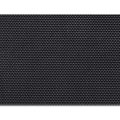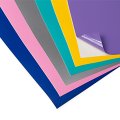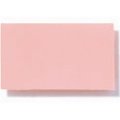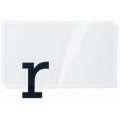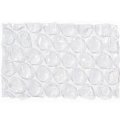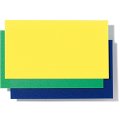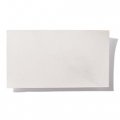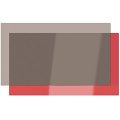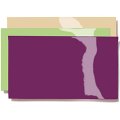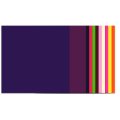Whiteboard Film
Information about whiteboard film
Whiteboards or markerboards are normally white in colour and have a very smooth writing surface that can be written on with special felt pens and then dry-erased. Their advantages are obvious: The higher contrast between the writing and the background considerably improves readability as compared to the standard school blackboard and, additionally, can also be newly written on much more quickly after being dry-erased; individual words or passages can be more quickly corrected as well. Not least because of these features has the whiteboard been used to replace chalkboards in many locations.
It is very easy, even pleasant, to write on a whiteboard because the tip of the pen seems to glide over its surface without any friction at all! We know that this isn’t necessarily the way everyone wants to do a presentation. There are definitely those among us who prefer to use a piece of chalk with its heavy drag to scratch out their writing on a rough surface to the sound of squeaks (not to say, grating squeaks!). For this choice group we recommend our chalkboard film, chalkboard paint, chalk and/or our classic wood-framed chalkboard.
The most important feature of a whiteboard is its surface. There are three conventional grades:
- Melamine resin: this is either a metal sheet or fibreboard that has been coated with melamine resin. The resin coat, it should be noted, is not as smooth as the other alternatives and is much more likely to scratch. In the case of the melamine resin coated fibreboard you lose the option of using magnets for attaching purposes. We carry this version mainly because it is so inexpensive that this disadvantage can be overlooked.
- Painted steel: This type is perfect for long-term and frequent use. It can also be employed as a magnet board while also having a really robust surface that is suitable for use with alcohol containing whiteboard paints. It should be noted, however, that the painted surface is more prone to scratching and more sensitive to the wrong type of cleaning agent or the wrong ink than an enamelled surface.
- Enamelled steel is recommended if you intend to use the writing surface a great deal. In this version, enamel is applied to a steel panel and fired at a very high temperature. What is true for many household objects is also true for this type of use: The enamel surface is that much smoother and that much easier to clean. Even more importantly, it is much more robust than the other versions – the surface is acid resistant and able to withstand harsher cleaning agents. The hard-fired enamel surface is also much less prone to scratching. If an unsuitable (permanent) marker is used by accident, the ink can still be removed without doing any damage to the surface.
Whiteboards are constructed much in the manner of a framed picture. The white surface is framed by an aluminium or plastic profile and in the case of larger (and more stable, i.e. better!) versions is kept distortion-free by means of a metal backing sheet that is mounted on the back of the aluminium frame. Other attributes indicative of quality include the workmanship, the construction and the sturdiness of the core and the backing sheet.
All the whiteboards we have on offer are magnet friendly and can therefore be used both as a writing board and as a magnet board.
One last thing: When dealing with the topic of whiteboards one can quickly come to the conclusion that more gifted designers have abandoned the whole sector. If you decide that, no, I don’t want any of these versions you could perhaps be persuaded to make your own using whiteboard film and (for example) dibond– note, however, that such a whiteboard will not be receptive to magnets. A writing surface that is likewise dry-erasable but rather more suitable for use in the kitchen or the hallway can be created by combining a window/ whiteboard marker and a smooth (NOT satin-finished) acrylic glass sheet.
